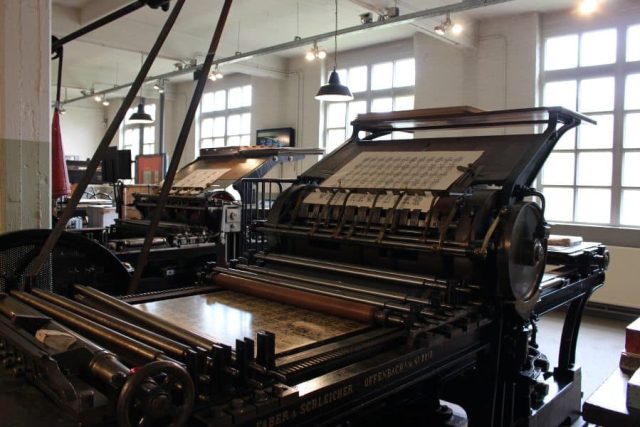In modern printing technology, where precision and efficiency reign supreme, inkjet is a shining beacon of innovation. This article takes you on a journey to unravel the captivating world of inkjet printing, delving into its intricate mechanisms and exploring the diverse applications that make it an indispensable part of people’s lives.
In printing, it takes center stage as a technological marvel. Operating like a virtuoso in an orchestra, it orchestrates the precise delivery of ink droplets onto paper or other surfaces. These minuscule droplets blend seamlessly to create images and text with remarkable clarity and vibrancy. Its magic lies in transforming digital files into tangible, full-color documents, leaving an indelible mark on industries and individuals alike.
This exploration navigates through the understanding of this technology, unveiling its inner workings and myriad benefits. From vibrant photo prints that capture cherished memories to producing intricate business documents, inkjet technology is the driving force behind it all.
Understanding The Cost Of Landscape
Within the realm of cost considerations in printing, several critical components contribute to the overall financial landscape. These components are crucial in determining the budgetary impact of printing processes and can significantly influence decisions regarding cost savings. Let’s delve into each of these elements to gain a comprehensive understanding:
Materials Costs
Materials costs are a fundamental aspect of any printing operation. These costs encompass a range of items, including the expense of paper, ink, or toner and additional materials such as binding or laminating supplies. The choice of materials can have a substantial impact on the overall budget. Opting for cost-effective materials that meet the desired quality standards is essential. Recycled paper, for example, is not only environmentally friendly but can also be an economical choice, reducing the expenditure on paper supplies. Furthermore, considering the efficient use of ink or toner, such as printing in draft mode for internal documents, can lead to significant savings.
Embrace Digitalization
In today’s digital age, transitioning from physical to digital documents is crucial for reducing printing costs. Digitalization involves using electronic documents, emails, and online communication as alternatives to traditional printing. By embracing digitalization, organizations, and individuals can reduce the consumption of paper, ink toner, and related materials. Digital documents also offer easy storage, retrieval, and sharing, enhancing efficiency and cost savings.
Opt For Eco-Friendly Practices
Eco-friendly printing practices benefit the environment and contribute to cost savings. The adoption of eco-friendly measures includes several strategies that can be used at various stages of the printing process:
Choose Recycled Paper: Opting for recycled paper reduces the environmental impact of printing while lowering material costs. Recycled paper is often competitively priced and readily available, making it a sustainable and economical choice.
Printing in Draft Mode: Many printers offer a draft mode option, which reduces the amount of ink or toner used during printing. While this mode may result in slightly lighter printouts, it can significantly reduce consumable costs.
Responsible Cartridge Disposal: Printer cartridges, whether inkjet or toner, can be expensive to replace. However, many cartridges are refillable or recyclable. Choosing responsible cartridge disposal options can extend the lifespan of cartridges and reduce the frequency of replacements.
Minimize Color Printing: Color printing typically consumes more ink or toner than black and white printing. To save on consumables, reserve color printing for documents that truly require it and opt for grayscale or monochrome printing when possible.
Centralize Printing
Centralizing printing operations involves consolidating printing equipment and resources into a centralized location within an organization. This strategy offers several advantages in terms of cost savings:
Equipment Consolidation: Centralization reduces the need for multiple printing devices scattered across various departments or offices. By consolidating equipment, organizations can optimize the use of printing resources and minimize the duplication of devices.
Enhanced Control: Centralized printing allows better control over equipment usage, maintenance, and supply management. It becomes easier to monitor the status of devices, track usage patterns, and coordinate maintenance activities efficiently.
Supply Management: Centralization simplifies the management of printing supplies, such as paper, ink, and toner. Organizations can maintain a centralized inventory, reducing the risk of overstocking or running out of vital supplies.
Cost Allocation: Centralization enables organizations to implement cost allocation methods, distributing printing expenses to specific departments or cost centers based on actual usage. This approach promotes accountability and cost-conscious printing practices.
Invest In Energy-Efficient Equipment
Investing in energy-efficient printing equipment can yield substantial cost savings over time. Energy-efficient printers and copiers are designed to consume less electricity, reducing energy costs and environmental impact. Key considerations when selecting energy-efficient equipment include:
Energy Star Certification: Look for printers and copiers that have earned the Energy Star certification, a recognized energy efficiency indicator. Energy Star-certified devices meet stringent energy consumption requirements and are designed to reduce power consumption during operation and idle periods.
Automatic Sleep Mode: Many energy-efficient printers feature intuitive sleep mode functionality. When not in use, these devices enter a low-power state, reducing energy consumption until they are reactivated. Automatic sleep mode helps minimize electricity costs without sacrificing productivity.
Duplex Printing: Duplex printing, also known as double-sided printing, is a feature commonly found in energy-efficient printers. By default, duplex printing reduces paper consumption, indirectly lowering material costs.
Implement Paperless Workflows
Transitioning to paperless workflows involves reducing or eliminating the need for printed documents by digitizing processes and documents. This approach not only streamlines workflows but also results in significant cost savings. Vital elements of paperless workflows include:
Electronic Signatures: Replace physical and electronic signatures for document authentication and approval. Electronic signatures are legally recognized in many jurisdictions and eliminate the need for printed documents for signing purposes.
Digital Forms: Utilize digital forms and online submission processes to replace paper-based forms. Digital forms can be completed, submitted, and stored electronically, reducing the need for physical forms and associated printing costs.
Cloud-Based Document Storage: Store documents in cloud-based repositories or document management systems. Cloud storage offers easy access, version control, and document-sharing capabilities without physical document storage or printing.
Email Communication: Encourage email communication for document sharing, collaboration, and distribution. Email attachments and electronic document-sharing platforms enable the exchange of information without the need for printed copies.
Consider Managed Print Services (MPS)
Managed Print Services (MPS) is a comprehensive print management approach involving outsourcing print-related tasks to a specialized provider. MPS providers offer expertise in assessing printing needs, optimizing equipment usage, and providing ongoing support. By considering MPS, organizations can benefit from the following cost-saving opportunities:
Print Assessment: MPS providers conduct thorough assessments of an organization’s current printing environment, identifying areas for improvement and potential cost-saving opportunities.
Equipment Optimization: MPS providers can recommend the right mix of printing equipment, including printer consolidation, to align with actual printing needs. This optimization eliminates the inefficiencies associated with redundant or underutilized devices.
Proactive Maintenance: MPS providers offer proactive maintenance and support services to ensure that printing equipment operates efficiently. Regular maintenance reduces downtime and minimizes unexpected repair costs.
Supply Management: MPS providers can manage the supply of consumables like paper, ink, and toner, ensuring that organizations maintain optimal inventory levels without overstocking or running out of critical supplies.
Cost Control: MPS providers implement cost control measures, including monitoring and reporting on printing activities. This transparency allows organizations to identify areas of excessive printing and implement cost-conscious printing practices.
Conclusion
In conclusion, the world of printing owes much of its allure and efficiency to the enchanting capabilities of inkjet technology. As you ventured into its realm, you witnessed the precision and versatility that it brings to the table.
It remains a steadfast companion for visually stunning and cost-effective printing solutions. Its vibrant colors, high-resolution outputs, and swift printing speeds continue to captivate people’s senses and enhance productivity. From personal photo printing to the demands of high-volume business operations, it has proven its mettle.
Bid farewell to this exploration and carry forward the appreciation for the marvel of this technology. The next time a beautifully printed photograph, a crisp business proposal, or any document that conveys information with precision and flair is held, remember this technology’s role in making it all possible. In an age where efficiency and excellence are paramount, it remains a stalwart ally, ensuring that your printing needs are met with grace and proficiency.














